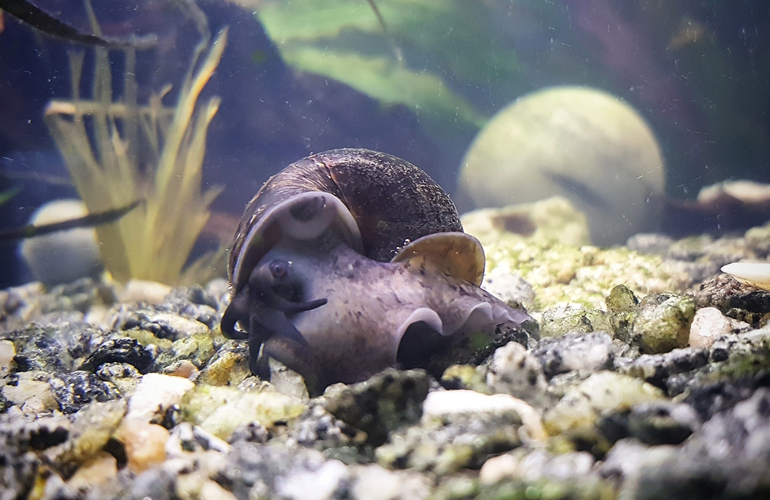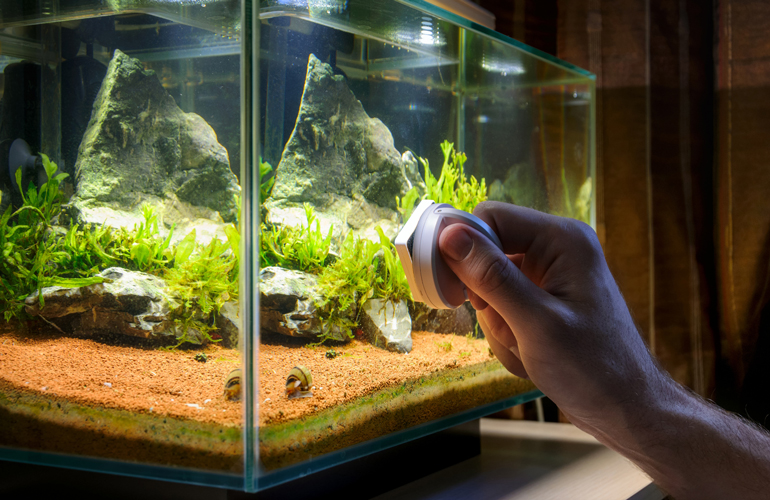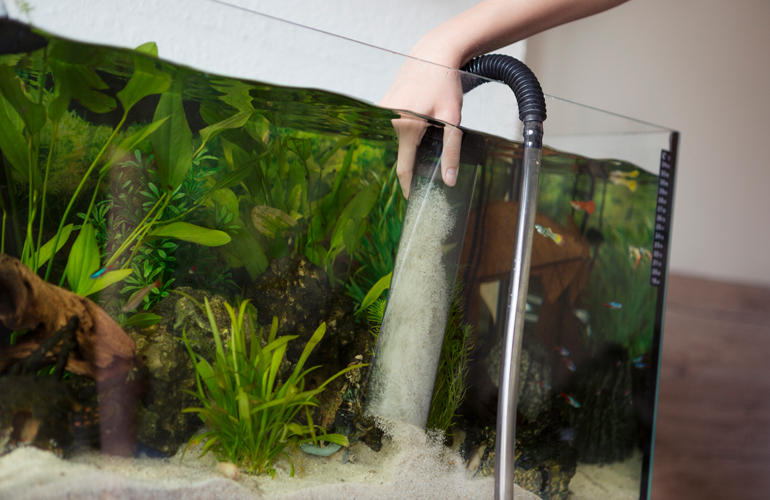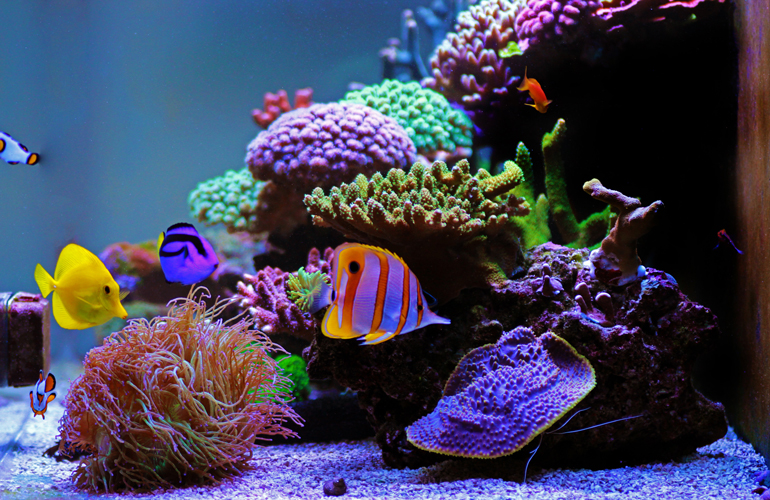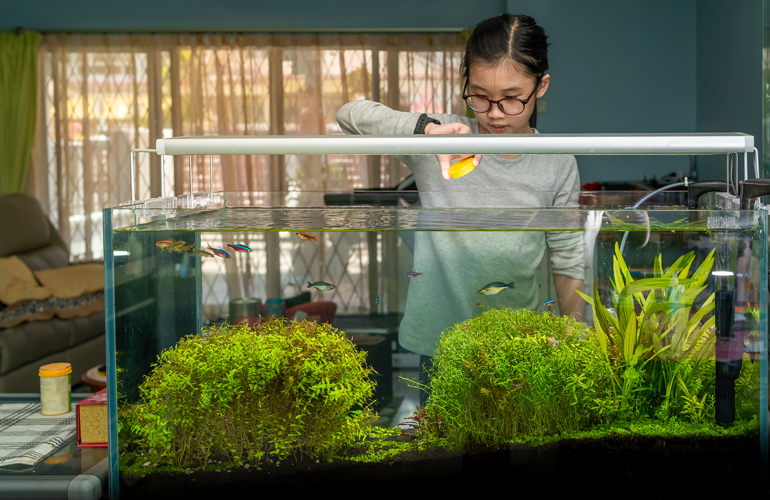Essential aquarium care
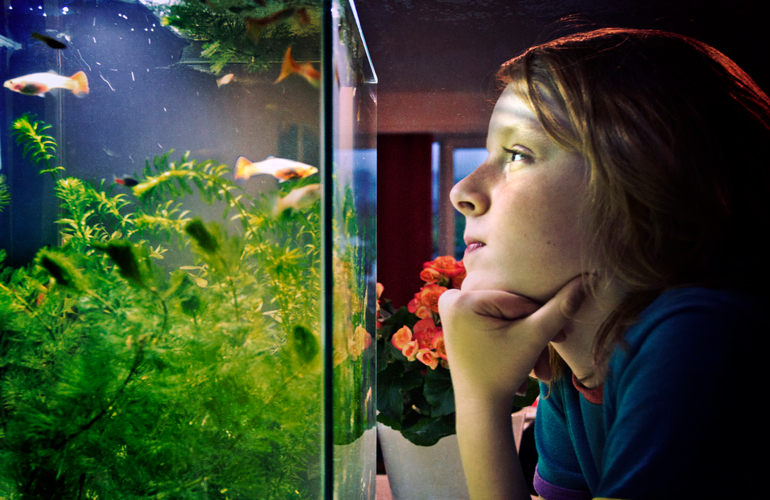
While fish might seem like relatively straightforward pets to keep, they do come with the responsibility of ensuring that their habitat remains a clean and hospitable one for them to live in. Aquarium care can be a bit tricky to navigate at first, so here are the essentials that you need to know to ensure your little finned friends remain safe and well.
Check your aquarium’s water

Check your aquarium’s water once a week for its pH, nitrate, nitrite and ammonia levels.
Read up on the chemical tolerances of your particular fish species, so you will know when it’s time for a change of water.
(The people who sold you all the gear may also be able to sell you a water chemical test kit.)
A number of variables affect how often you will need to change the water: how many fish you have, how big they are, the species, the size of the tank, your lighting and the kind of filtration you’re using.
You don’t really change all the water at once.
Just change 10 to 25 per cent of the water in your aquarium, and expect to do it about every two weeks.
To change the water
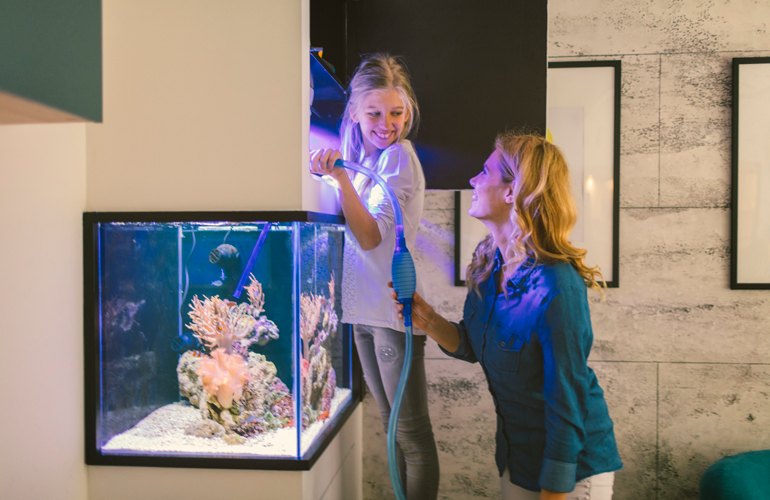
Round up enough buckets to handle 10 to 25 per cent of the water in your tank.
(You can use the same bucket over and over, but you’ll have to keep stopping the siphon while you empty it out.)
Use a siphon hose to draw the water out. A clear hose is best, so you can see what you’re sucking up.
Don’t refill the aquarium with water straight from the tap. Nearly all tap water has chlorine added, which will hurt your fish. (Many aquarium suppliers will test a sample for you, or you can use a home water-chemical test kit.)
To remove the chlorine, either use a chlorine neutraliser (available from aquarium suppliers), or let the water sit in a basin for 24 hours before pouring it in, giving the chlorine time to dissipate naturally.
Make sure the new water is about the same temperature – within one or two degrees – as the water left in the aquarium.
Not sold on fish? Discover how to find the perfect pet for you.


